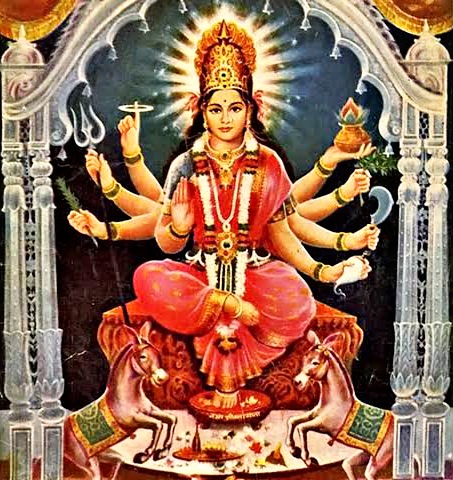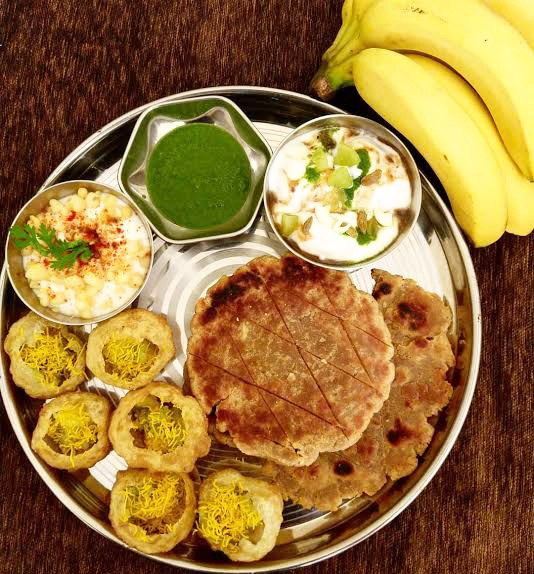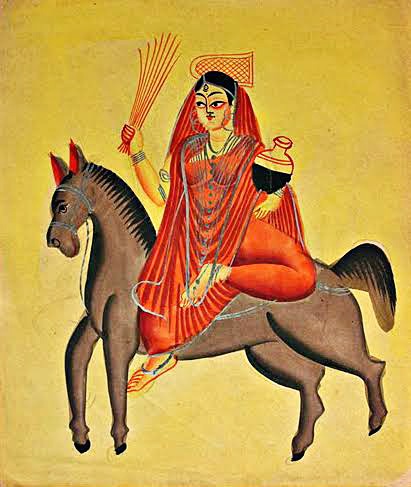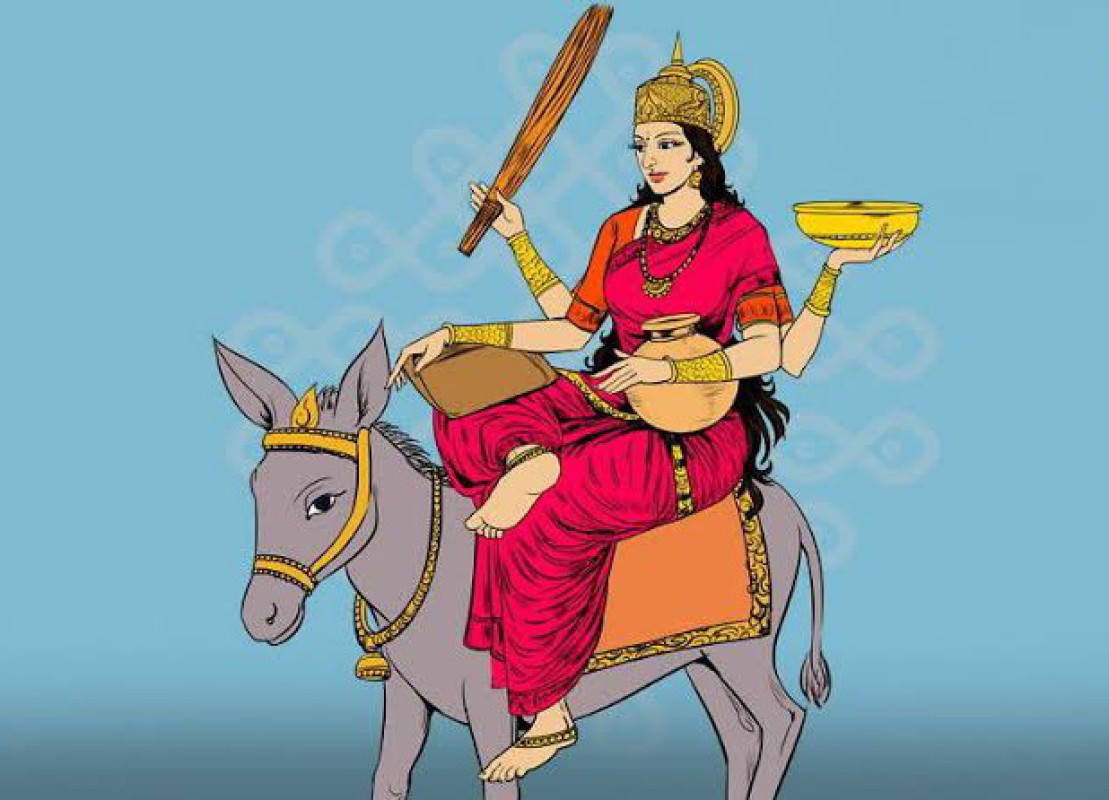India is a country where we celebrate so many festivals. There are different festivals for different occasions & each festival has a specific meaning which is connected to the historical as well as scientific significance. Festivals make Hinduism colourful & vibrant. Perhaps there is no other religion in the world where people celebrate so many festivals. Almost every day, week & month in Hindu calendar have some significant day to celebrate, be it a fasting day or a worshipping day or harvesting day, etc.
Hindus also celebrate the Vrata (a Vow) (व्रतम्). As discussed in the earlier articles, there are few Vratas (a Vow) (व्रतम्) which occurs twice a month or sometimes yearly. Chaturthi (4th day), Ashtami (8th day), Ekadashi (11th day), Shivratri (शिवरात्रि), etc. are the festivals which occurs in every Hindu month, such festivals are known as Vrata (a Vow) (व्रतम्). There are few Vrata (a Vow) (व्रतम्) which occurs once a year like Vat Savitri Vrata, Gauri Vrat, Naag Panchmi, Janmashtami, etc. Just like such Vratas, Sheetala Saptami is also known as Vrata (a Vow) (व्रतम्).
Sheetala Saptami (शीतला सप्तमी) is celebrated on different days by different regions. The major festivities are celebrated in rural areas & mainly in the regions of Uttar Pradesh, Rajasthan & Gujarat. In the southern states of India, Goddess Sheetala is worshiped as Goddess Poleramma or Goddess Mariamman. In Karnataka & Andhra Pradesh, Sheetala Saptami (शीतला सप्तमी) is observed as Polala Amavasya.
States like Rajasthan, Uttar Pradesh, etc. celebrates this day on the eighth day of the bright fortnight of the Chaitra month (चैत्रः शुक्लपक्षे अष्टमी), states like West Bengal celebrates this day on the seventh day of the bright fortnight of the Chaitra month (चैत्रः शुक्लपक्षे सप्तमी), Southern states celebrates this day on the seventh day of the bright fortnight of the Shravan month (श्रावणः शुक्लपक्षे सप्तमी) & States like Gujarat, Maharashtra celebrates this day on the seventh day of the dark fortnight of the Shravan Month (श्रावणः कृष्णपक्षे सप्तमी). In this article, we are going to explain this festival’s significance & rituals according to the Gujarat state.
In Gujarat & a few other states, this festival is celebrated in the month of Shravan as Sheetala Satam (शीतला सप्तमी). The day before Sheetala Satam (शीतला सप्तमी) is known as Randhan Chhath, when women cook numerous dishes for the next day. Dishes include; chapati, masala puris, khir, sabjis made with oil only without adding water, etc. which are stored in an air tight container.

Significance of Sheetala Saptami (शीतला सप्तमी) –
The significance of Sheetala Saptami (शीतला सप्तमी) is mentioned in the Skanda Purana. According to the Hindu scriptures, Sheetala is the Goddess of healing diseases. She is an incarnation of Goddess Parvati. Goddess Sheetala represents nature’s healing power. The word Sheetala is a Sanskrit name which literally means the one who heals the diseases like smallpox. The Goddess Sheetala cools her devotees who are suffering from contagious diseases like; Chicken Pox, Small Pox, measles, burns, herpes, dermatitis, eczema, high fever, hyperpyrexia fever, etc.
The Skanda Purana explains the symbolic significance of Goddess Sheetala through the shlok;
वन्देऽहं शीतलां देवीं रासभस्थां दिगम्बरम् ।
मार्जनीकलशोपेताम् शूर्पालंकृतमस्तकाम् ॥
Meaning - I worship that Goddess Sheetala, who is seated on the donkey, who has four directions as her clothes, who holds a broomstick & a pot in her hand & whose head adorned with the winnowing basket.
According the above shlok & Skanda Purana, Goddess Sheetala is represented as a young maiden crowned with a winnowing-fan, which signifies purifying, riding on a donkey signifies modesty, having two hands, holding a long broom to dust off germs in one hand & pot full of clean water in another hand, which is used to heal the diseases which are essential for a good health.
Sometimes, she is also depicted as having four hands where, in one hand she is holding a long broom, in another hand holding a pot full of clean water, in third hand she is holding winnowing basket & in fourth hand she is holding neem leaves or sometimes wearing a neem garland. Neem is a natural, tree product that has immense medicinal value. In the olden days when antibiotics were not discovered, neem was used to detox the body or fight germs & infection. According to the Ayurveda & Sushrut Samhita neem leaves possesses physiological & pharmacodynamic effects. It is also used as a remedy for certain inflammatory skin diseases as well as effective for antipyretic drug which is used to prevent or reduce mild to high fever.
The peak of the monsoon season is during the Shravan month (which falls in August), during this time, the WBC (White blood cells) gets weaken due to temperature fluctuations, thus lowering our immunity. With a weaker immune system, bacterial diseases like typhoid & viral infections like the common cold & viral fever tend to spread rapidly. Furthermore, rainwater causes common airborne & water borne diseases that include Malaria, Typhoid, Cholera, Common Cold, etc. Not only this, chickenpox, smallpox, measles, burns, herpes, dermatitis, eczema, high fever, hyperpyrexia fever, etc.; such diseases also get spread more which occurs especially among children. Water bodies get polluted easily during the rainy season thus increasing the risk of water borne diseases. So, eating the food cooked a day before, scientifically helps the body to overcome such diseases.

Scientific reasons of eating food of previous day on Sheetala Saptami (शीतला सप्तमी) –
On this day, eating simple, non-spicy, previous day food stored safely from a day before is prescribed to be eaten according to the Scriptures which has scientific benefits connected to it. Following are the scientific reason which explains why devotees eat previous day food on Sheetala Saptami (शीतला सप्तमी);
- Eating food which is cooked a day before helps the digestive system to relax. Such food also digests quickly.
- Eating food which is cooked a day before helps to balance the blood pressure & eliminates stomach problems.
- Generally, curd or yogurt is added to the meal on this day, which reduces the risk of bladder cancer as the fermentation process makes lactic acid bacteria active that suppresses bladder cancer.
- Eating food cooked a day before helps to control the body temperature, as the temperature of the food affects the body temperature & eating warm food will keep the body warm. In the same way, eating room temperature food, the temperature of the body will remain cool or if one has a hot temperature, then after eating cold food the temperature will be cooled down.
- Another scientific reason is, the food cooked a day before lacks the original flavour & taste. So, when we eat cold food, we do not get full taste & flavour due to which we tend to eat less than normal, which helps to digest food faster.
- Again, previous day food consists of certain bacteria, such bacteria help to increase immunity.
- On this day one should take a bath with room temperature water. This practice on this particular day helps to keep the body in normal temperature throughout the monsoon season & keeps the body energetic.
One should avoid eating cold food which is stored in the refrigerator as such food lacks the original nutrients which may lead to stomach related problems.

Historical account of Sheetala Saptami (शीतला सप्तमी) –
According to the Devi Bhagvata Purana & Skand Purana; once there was a sage named Katyayana who was a great Sanskrit grammarian, mathematician & Vedic priest. He was a childless & he wanted a child. As he was an ardent devotee of Goddess Parvati, he performed difficult penance to get a blessing of a child. After many years, his penance paid off & Goddess Parvati appeared in front of sage Katyayana. Sage Katyayana asked for a child, in return Goddess Parvati said that she herself will take birth as his daughter as she needed to destroy evil demonic forces of the world.
After a few years she took birth at Sage Katyayana’s house & she was named Katyayani. She when reached the age of 18 years, she took the form of Goddess Durga & killed Mahishasura so she came to know Mahishasuramardini. Later, a demon named Jwarasura started troubling the children. Jwara is the Sanskrit name which literally means fever. So, Jwarasura started causing high fever, chickenpox, smallpox, measles, etc. to the children. Katyayani took the form of Sheetala & cured many diseases.
Later Goddess Sheetala requested Batuk Bhairava to confront the demon Jwarasura. A battle arose between the Batuk Bhairava & demon Jwarasura. Later, Jwarasura created many demons, but Batuk Bhairava managed to destroy all of them. Finally, Goddess Sheetala killed Jwarasur with the help of Batuk Bhairava & cured all the diseases which were caused by Jwarasura.
This is the reason, Hindus worship Goddess Katyayani when their child bears chickenpox, or smallpox or any such diseases.

Ritual Ceremony of Sheetala Saptami (शीतला सप्तमी) –
This festival is celebrated for two days as a day before Sheetala Saptami (शीतला सप्तमी) & on the Sheetala Saptami, both the days devotees perform ritual ceremonies.
The day before Sheetala Saptami (शीतला सप्तमी) is the day of preparing a few dishes to eat on the next day. Different regions of India call this day by different names in different languages. In Gujarat a day before Sheetala Saptami is known as Randhan Chhath, which literally means a sixth day of cooking food. On this day devotees cook different dishes made out of oil or ghee only. Vegetables are sautéed in oil as veggies stay fresh till the next day so, we avoid using water while making sabjis. Puris & chapatis are made also, different sweets like khir, shira, etc are made on this day.
Till evening devotees finish preparing such dishes after preparing the food to eat for the next day, devotees let the gas stove cool down & later the gas stove is worshipped by marking Swastik & offering raw rice. After worshipping the stove, devotees do not start the stove till the eighth day of the dark fortnight of the Shravan month (श्रावणः कृष्णपक्षे अष्टमी) i.e., the next day of the Sheetala Saptami (according to the Gujarat state, on the day of Krishna Janmashtami devotees starts the stove).
On the day of Sheetala Saptami (शीतला सप्तमी), devotees wake up in the morning & visit the temple of Goddess Sheetala. Even in the temples where there is no murti of Goddess Sheetal, they make an idol of Goddess Sheetala with the help of clay & devotees worship her & offer flowers, raw rice, a powder composed of eight fragrant ingredients (अष्टगंधः), red turmeric powder (कुंकुमः), turmeric powder (हरिद्रा), scarlet power (सिंदूरः), White powder (अबिलम्), pink powder (used in holy festival) (गुलालम्) also waves the lamps (आरार्तिकम्/आरात्रिकम्) & worship the idol made up of clay. Some devotees also make an idol of Goddess Sheetala at home & worship her.
Devotees do not cook food on this day, instead the previous day’s cooked food is consumed on this full day. Consumption of hot fresh food or food heated in the microwave, etc. is prohibited. Devotees recite the shlokas, mantras & stotras of Goddess Sheetala like Sheetala Ashtakam, etc. Devotees worship Goddess Sheetala on this day for the well-being, good health & prosperity for the family & the children.
Thus, this day is not celebrated to satisfy mere superstition, but as this day has a connection to the history of our culture which is also connected to the science, we celebrate it with great enthusiasm & faith.
आषाढः कृष्णपक्षे १२, २०७८
